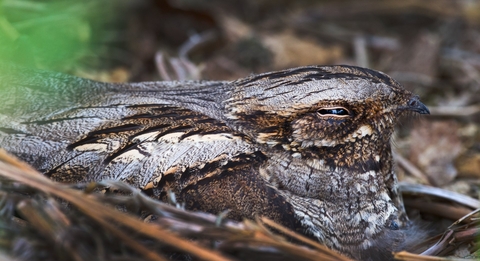Surrey’s beautiful tracts of heathland and grassland are home to incredible biodiversity and internationally significant populations of rare species.
Fire has always helped to shape this remarkable landscape, by clearing scrub and woodland to create habitat for reptiles and migrating birds. But with climate change leading to longer, warmer and drier periods of weather, the vegetation can become parched and the risk of uncontrolled burning rises. Couple this with an increase in visitor numbers to nature reserves and you have a potentially incendiary problem.
Migrant on a mission
For example, the nightjar travels thousands of miles each year to nest on our nature reserve at Chobham Common and other sites in Surrey. It has no time to waste as it sets up a territory, chooses a suitable location, lays eggs, and rears and fledges its young – all before setting off back to Africa. This race against the clock, along with the nightjar’s habit of nesting on the ground among the heather, makes its chicks vulnerable to wildfires. This was brought to national attention in August 2020, when a fire burned more than 200ha of land on and around Chobham Common, threatening nightjars, Dartford warblers and more than 300 species of wildflowers. It took ten days of firefighting operations to extinguish the blaze.
Recovery in danger
As guardians of so many rare species, the Trust sees the impact of wildfire at first hand. In an incident like Chobham Common, the nightjar chicks that cannot escape will lose their lives. The adult birds may try to raise another brood. but it may be too late in the season. What’s more, when habitats are destroyed by wildfire, it can take years before they recover. In extreme cases a fire may be so big it destroys whole populations of species and, if habitats are fragmented, recolonisation may be impossible. We have sites where the rarest reptile species, such as the sand lizard, have been wiped out by repeated fires.






